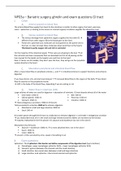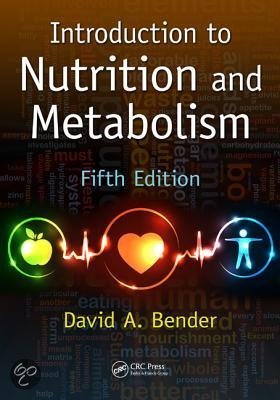NP03a – Bariatric surgery, ghrelin and exam questions GI tract
Colon
Arterial splanchnic blood flow
The arterial blood flow supply from heart to the intestines is similar to other organs, the heart, pancreas,
colon… Splanchnic (= relating to the viscera or internal organs) circulation supplies the alimentary tract
Venous splanchnic blood flow
• The venous drainage from splanchnic organs supplies the liver with O2 à
different from other organs! (first the blood goes to the liver)
• Portal vein: potential toxic molecules are transported via the portal vein to
the liver, in order to break these molecules down (and then to the heart).
This blood is partly oxygen rich and rich in nutrients!
For the majority of the intestinal organs à the veins are all going to the liver à all
the nutrients and toxic compounds that are absorbed are first of all passing via the
liver (except for the lipids) via the hepatic vein and then to the heart
Note: if toxins are fat soluble, they don’t pass the liver, they will go via the lymphatic
system directly to the heart
Meal alters peripheral and intestinal blood flow
After a meal, blood flow in peripheral arteries ↓, and ↑ in intestinal arteries to support functions and enhance
digestion
If you have dinner at 6, and start exercising at 7 à increased blood flow to the organs of the belly à less blood
flow for exercise in the peripheral muscle
à shift in the body of the blood flow, depending if you are eating or not
Water flow in intestines (24h)
Large volumes of water are used for digestion + absorption of nutrients. GI tract absorbs almost all of the water
• Oral intake: 1500 ml • Bile: 500 ml
• Salivary glands: 1500 ml • Pancreas: 1500 ml
• Stomach: 2500 ml • Intestine: 1000 ml
à Total endogenous secretions: 7000 ml (7 litres!!)
Total presented to intestine: 8500 ml to enhance digestion
• Absorbed in small and large intestine: 8300 ml
• Stool: 200 ml
8.5L water passes through the GI tract on a daily basis to enhance digestion = oral intake + endogenous secretion
à you reabsorbed most of it in the small and large intestine (and the 200mL are excreted via the faeces)
à majority reabsorbed in the first phase in SI: jejunum and duodenum (so not in the colon!)
Absorption (mL/24 hours)
§ Jejunum + duodenum: 5000 mL à so most absorbed here, not in the colon!
§ Ileum: 1300 mL
§ Colon: 2000 mL
à around 1.3 litre excreted by urine, sweat or breathing it out
Exam questions
Sphincters: The 5 sphincters that border and define components of the digestive tract (top to bottom)
a) Oesophagus: upper oesophagus sphincter (UES) – lower oesophagus sphincter (LES)
b) Stomach: pylorus (between the stomach and the small intestine)
c) Small intestine: ileo-caecal valve (between small and large intestine)
d) Large intestine: anal sphincter: internal and external anal sphincter






